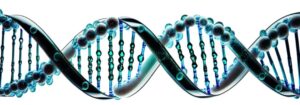Methylation for Beginners: Why Nutrient Levels Need to Be Tested
By Charles Hinshaw, MD – Laboratory Director
Forward By Tayler Youngers – New Patient Coordinator
I was looking at previous articles on our website to learn more about our laboratory tests, and I ran across this article by Dr. Hinshaw that sheds light on the Riordan approach and why our Bio-Center Laboratory is essential. Humans are complex, biological processes are complicated, and finding root causes takes concrete evidence, not guess work. It’s easy to get caught up in the importance of a single nutrient, but do you know how that nutrient interacts within the vast interconnectedness of all your biological systems? Our Methylation Profile is an example of how we can use a variety of tests together to create a more complete picture of why your body is functioning the way it is.
Charles T Hinshaw Jr, MD, Director, BioCenter Laboratory
Methylation describes the addition of a methyl group to a substrate with the purpose of making another substance. This begs the question, what is a methyl group? A methyl group consists of a carbon atom (C) to which three hydrogen atoms (H) are attached: thus CH3, the chemical expression of methyl. The process of adding to or taking away a methyl group is critical in cellular metabolism, and in fact, occurs in every cell in human beings, billions of times every second.
Methylation is needed to keep all cells in good working condition. There are many examples that illustrate the importance of methylation, such as:
- If the “feel good,” antidepressant brain chemical serotonin is not methylated, it will become inactive, which in turn leads to depression.
- When the essential amino acid methionine is used to methylate proteins and DNA, a secondary amino acid is produced, homocysteine. Homocysteine is an amino acid that is a well-recognized independent cardiovascular risk factor, and must be methylated itself to convert back to methionine.
- Methylation of certain parts of your DNA can switch off unnecessary genes and prevent abnormal DNA division and cancer development.
Fortunately, rather than worrying about complex biochemical pathways, the status of methylation can be evaluated by testing the levels of key, essential nutrients necessary for normal methylation. Patterns of specific deficiencies are indicative of impaired methylation and can be used for initial diagnosis, confirmation and follow-up. When deficiencies are recognized, supplementation with the appropriate nutrients can correct the impaired methylation pathways and thereby relieve symptoms. As medical knowledge continues to improve and grow, correction of impaired methylation related to DNA defects, either hereditary or acquired (SNPs), will also be added to the armamentarium of treatment methodologies.
The BioCenter Laboratory at the Riordan Clinic offers a comprehensive Methylation Panel that evaluates key nutrients that are needed for optimal methylation. Included in the panel are:
- Coenzyme Q10
- Glutathione-RBC
- Histamine
- Homocysteine
- B12
- Folate
- Vitamin B2
- Vitamin B6
- Magnesium
- Copper
- Zinc
- Urinary Pyrroles






